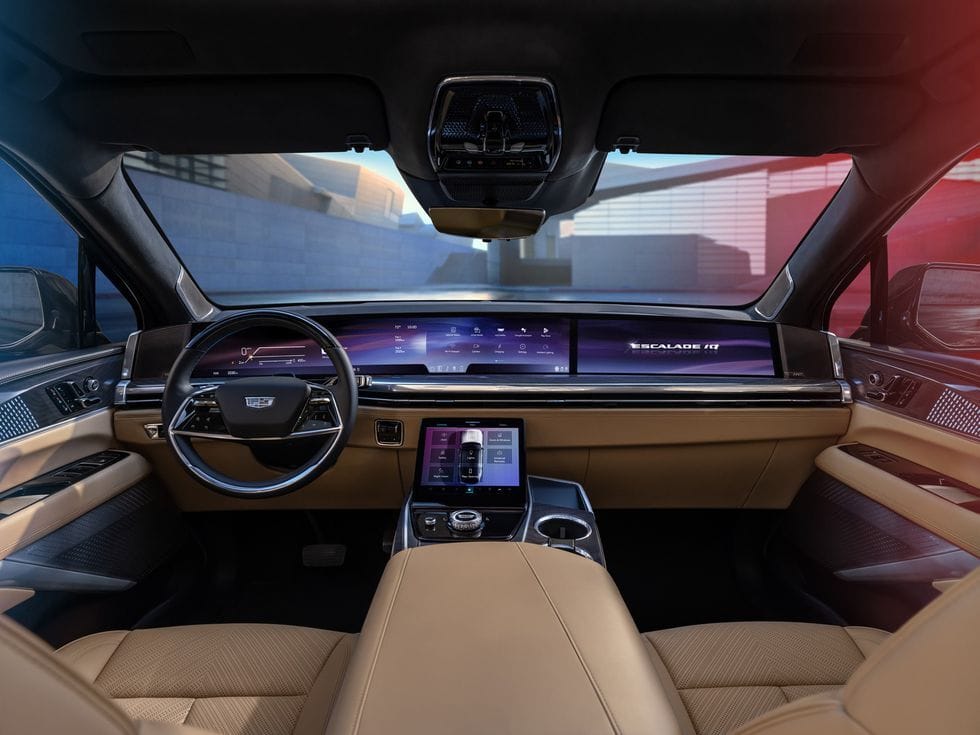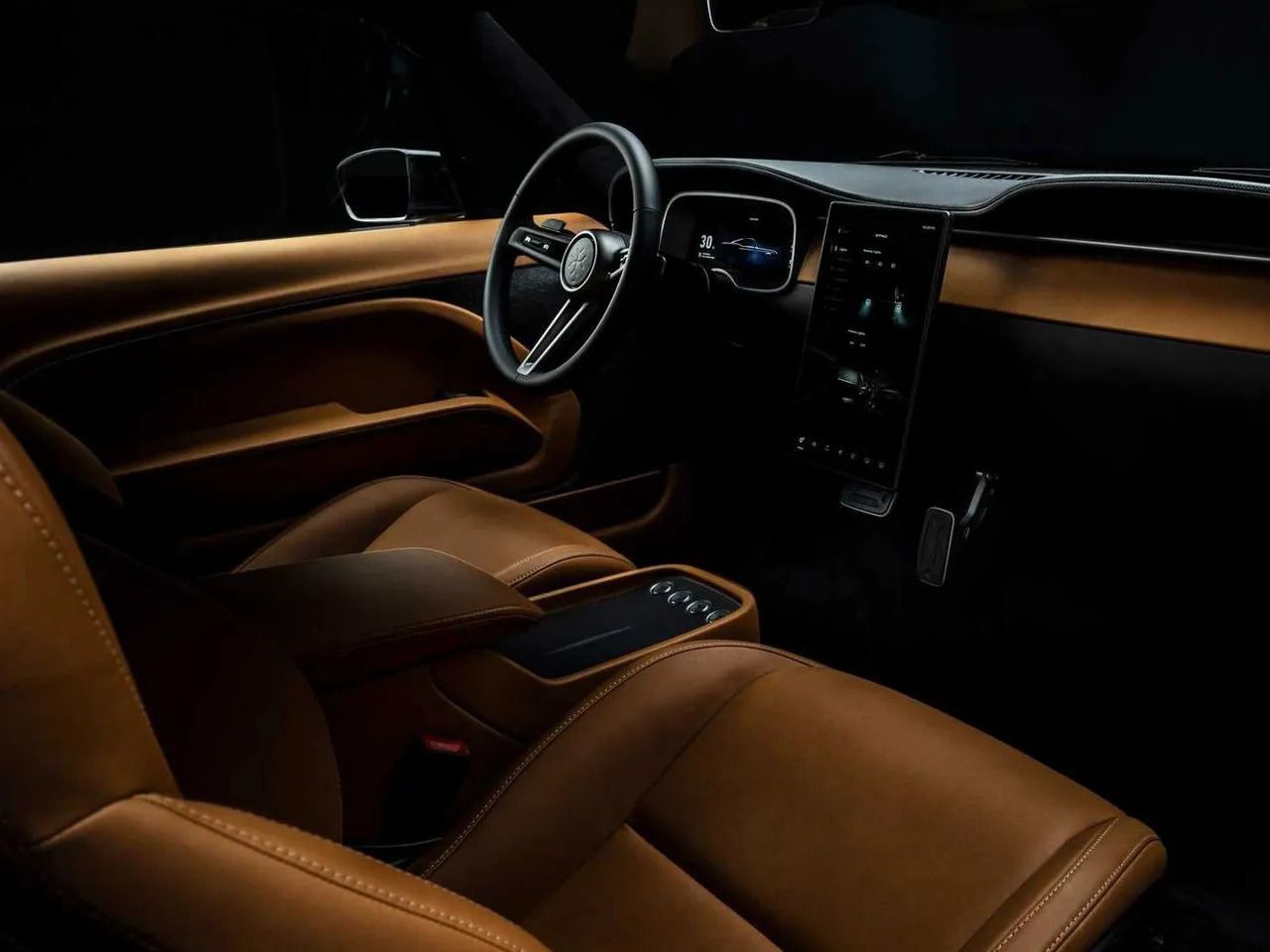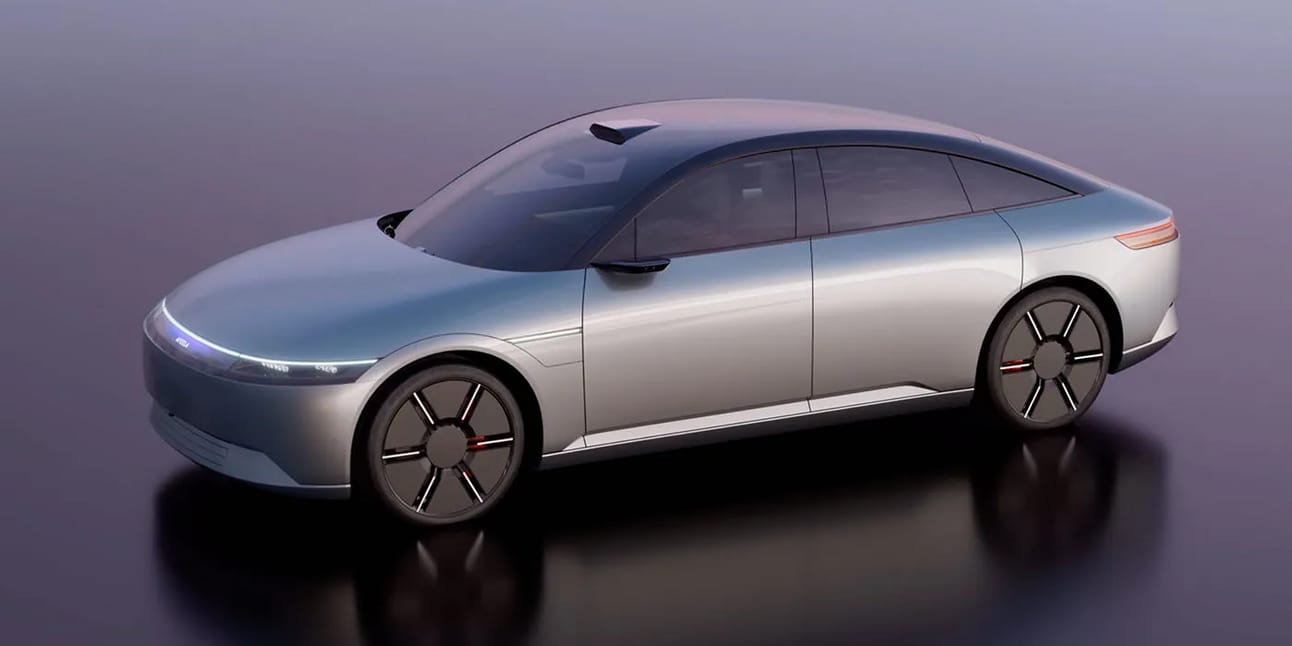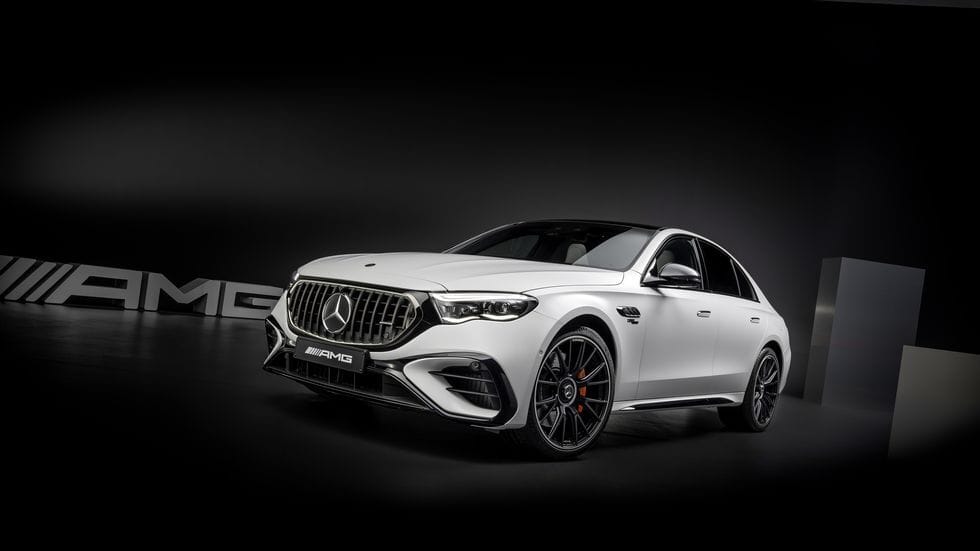
Read Time: 10 min
Welcome to the Future Forecast Edition of our newsletter, where we dive into the exhilarating intersection of technology, innovation, and automotive evolution. As we race towards a future sculpted by the dreams of yesterday and the breakthroughs of today, this edition is your all-access pass to understanding how the vehicles we love are transforming before our eyes.
From the luxurious corridors of Cadillac's latest electric masterpiece to the conceptual drawing boards of Sony and Hyundai, we're charting a course through an automotive landscape brimming with potential. Here, the latest advancements in automotive technology are not just enhancing our driving experience but redefining what it means to travel.
As we unveil the top cars of today and the visionary concepts of tomorrow, our journey will take us from the marvels of modern engineering to the realms of what once seemed purely the domain of science fiction. So, fasten your seatbelts, and let's embark on this thrilling ride into the future of transportation—a future where the line between the cars we drive and the technologies that drive us blurs into a new horizon of possibilities.
Cars of Today & Tomorrow
The automotive industry is buzzing with innovation and investment in technology as plenty of companies are chasing the future to stay one step ahead of the competition. In this section we’ll show you some of the most advanced cars of today before revealing exciting concepts of tomorrow.
Top Cars of Today
2025 Cadillac Escalade IQ
The Escalade IQ is more than just a car; it's a statement on the future of luxury EVs, blending iconic design with cutting-edge technology and performance. It's poised to be a landmark release for Cadillac and a significant contender in the electric SUV market.
The interior is a tech-lover's dream, with a combined 66.0 inches of screen space across the dashboard, including a 35.0-inch driver display and a 25.0-inch passenger screen, among others. However, it notably lacks Apple CarPlay, a decision by GM to promote a Google-based operating system for better integration in its EVs.

Source: Cadillac

Source: Cadillac
Charge Cars: 1967 Ford Mustang
The Charge '67 Mustang marries the timeless allure of a 1967 Ford Mustang Fastback with the forward-thinking innovation of Arrival's electric vehicle technology, creating an electro-retro masterpiece that's both visually stunning and technologically advanced. With only 499 units slated for production and a steep starting price of $450,000, this vehicle caters to a niche market seeking exclusivity and high-tech luxury.
Inside, the Charge '67 diverges from its historical inspiration, offering a modern, minimalist cabin equipped with two screens, bespoke to Charge and powered by Arrival software. This system encompasses cutting-edge technology such as satellite navigation, phone connectivity, traffic light recognition, and adaptive cruise control, setting new standards for in-car infotainment and connectivity in a classic car framework.

Source: Wired

Source: Wired
2025 Mercedes AMG E53 Hybrid
The 2025 Mercedes-AMG E53 emerges as a testament to the fusion of high-performance and environmental stewardship, setting a new benchmark in the luxury plug-in hybrid market. With a starting price estimated around $84,000, this high-performance sedan not only speaks to luxury but also to Mercedes-AMG's commitment to sustainable driving pleasure.
Inside, the E53's cabin melds traditional luxury with futuristic tech. The interior features an AMG performance steering wheel, power-adjustable front AMG sport seats, and unique grey-hued open-pore ash wood trim. Infotainment is cutting-edge, with a setup boasting multiple displays, including augmented reality navigation, and quirky features like a selfie camera and apps like TikTok and Zoom.

Source: Mercedes

Source: Mercedes
Top Cars of Tomorrow
Plenty of cars don’t make it past the concept phase. Apple and Dyson are prime examples of that fact. Here are a few cars that are potentially are their way to reality.
Sony AFEELA

Sony's Afeela electric vehicle, slated for a 2026 release, is a high-tech marvel combining the comfort of your living room with the innovation of Honda Mobility. Despite withholding specifics about its performance capabilities, the Afeela impresses with its interior and technological advancements.
The Afeela's entertainment system is a standout, capable of playing movies and games via PlayStation Remote Play service, set against customizable themes related to Sony Entertainment properties. The control system is designed to be intuitive, with a significant control dial for easy access and adjustments.


Hyundai N Vision 74
The N Vision 74 from Hyundai looks like it’s driven straight out of an 80s sci-fi blockbuster, with its sleek lines and retro-futuristic design paying homage to the iconic Pony Coupe Concept. It’s a striking blend of past and future, where classic aesthetics meet innovative hydrogen electric hybrid technology, embodying the spirit of an era that dreamed big and bold about the future of automotive design.
Hyundai's N Vision 74 is not just a showcase of technological innovation but also features practical technologies that could be applied to mass-produced high-performance vehicles in the future. As Hyundai continues to explore the possibilities of high-performance, sustainable vehicles, the N Vision 74 stands as a testament to the company's vision for the future of driving, blending speed, sustainability, and style in a groundbreaking package.

Source: Hyundai

Source: Hyundai
Delorean Alpha5
The DeLorean Motor Company has unveiled the Alpha 5 electric vehicle (EV), a modern revival of the iconic '80s-era DeLorean, complete with the signature gull-wing doors. This new model promises a sprint to 60mph in just under 3 seconds, and features an estimated 300 miles of range from a 100kWh battery, with a top speed of 155mph.
It's important to note that the current company isn't the original DeLorean manufacturer but a Texas-based entity that acquired the DeLorean branding rights. The Alpha 5 showcases a sleek, updated design with smoother curves and four seats, developed in partnership with Italdesign, which also worked on the original DMC-12.

Source: Delorean

Source: Delorean
Hydrogen-Powered Pininfarina Enigma

Source: Pininfarina
In our journey toward the transportation of tomorrow, the Pininfarina Enigma stands as a beacon of innovation and sustainable design. Unveiled at the Geneva International Motor Show, this hydrogen-powered GT concept car merges cutting-edge technology with unparalleled aesthetic beauty, heralding a new era of automotive excellence as we edge closer to Pininfarina's centennial celebration in 2030.
The Enigma encapsulates the essence of futuristic travel with its active aerodynamics and augmented reality windscreen, demonstrating a forward-thinking approach to vehicle design and functionality. Its sculpted body, designed with aerodynamics at its core, seamlessly integrates technology and form, guiding air with precision and showcasing the active aero rear wing as its crowning glory.

Source: Pininfarina

Source: Pininfarina
Which car would you choose?
Top Cars of Today & Tomorrow showcased the pinnacle of automotive excellence and innovation. Today, the spotlight shines on the 2025 Cadillac Escalade IQ, merging luxury and EV technology; the Charge '67 Mustang, a modern take on a classic with advanced EV capabilities; and the Mercedes AMG E53 Hybrid, blending high-performance with sustainability.
Tomorrow's visionaries include the Hyundai N Vision 74, reviving 80s nostalgia with hydrogen hybrid tech; the DeLorean Alpha 5 EV, a modern nod to an iconic past; and the Pininfarina Enigma, a hydrogen-powered marvel with futuristic design.
These exemplars of automotive ingenuity pave the way to our next section focused on the digital enhancement of the transportation experience. Here, we explore how technology is revolutionizing the way we interact with our vehicles, making every journey an unprecedented blend of connectivity, comfort, and convenience.
Top 10 Automotive Technologies of 2023
In the automotive world of 2023, technology takes center stage, transforming how we drive, interact, and keep safe on the roads. From safety shields that hover invisibly around us to connectivity that brings our digital world seamlessly into our vehicles, here are the top 10 automotive technologies according to Kelley Blue Book enhancing our driving experience:
Advanced Driver-Assistance Systems (ADAS): Bundles of systems that enhance vehicle safety and driver assistance, such as blind-spot monitoring and lane-keeping assist.
Automatic Emergency Braking (AEB): A critical safety feature that automatically applies the brakes to prevent or reduce the severity of a collision.
Connected Mobile Apps/Digital Key: Smartphone apps that allow for remote control over various vehicle functions and digital keys for keyless entry and start.
Teen Driver Tech: Technology that helps parents monitor and control the driving habits of their teenage children, promoting safer driving practices.
Safe Exit Assist: Protects cyclists and other vehicles by alerting passengers before opening doors when it’s unsafe to do so.
Wireless Smartphone Connectivity and Charging: Enables clutter-free charging and integrates smartphones with the vehicle’s infotainment system wirelessly like Apple Car Play or Android Auto.
360-Degree Camera: Provides a bird's-eye view of the vehicle’s surroundings, aiding in parking and avoiding obstacles. This one is quite interesting if you haven’t seen it.
Emergency Services/Stolen Vehicle Tracking Software: Offers peace of mind through emergency response services and the ability to track a stolen vehicle.
Blind-Spot View Monitor: Displays what’s in the driver's blind spot on a screen, reducing the risk of lane-change accidents.
Towing and Truck Tech: Advanced technology for trucks and SUVs that simplifies towing and enhances safety and convenience.
These technologies not only promise enhanced safety and convenience but also herald the future of transportation, where our vehicles become more than just a means to get from point A to point B – they become our partners in navigating the increasingly complex world of travel.
What does the future of car technology look like?

Source: Marelli
Exploring the horizon of automotive innovation reveals a roadmap filled with transformative technologies destined to redefine our driving experiences. Here's a concise look at what's accelerating us towards a future where vehicles are smarter, safer, and more sustainable:
Electric Propulsion Systems: Marking a shift towards sustainability with longer ranges and quicker charging.
Autonomous Driving and AI: Vehicles navigate autonomously, promising safer roads and increased mobility.
Augmented Reality Displays: AR windshields enhance driving by overlaying vital information onto the road ahead.
Vehicle-to-Everything Communication: Enhances situational awareness through data exchange with surroundings.
Advanced Materials: Use of lightweight materials for improved efficiency and performance.
Energy Regeneration: Innovations like regenerative braking optimize energy use, extending EV ranges.
Connected Car Ecosystems: Vehicles integrate into broader networks for enhanced services and updates.
Dynamic Charging: Embedded road infrastructure charges EVs on the move, revolutionizing long-distance travel.
These technologies not only forecast a wave of economic growth and job creation but also signal a shift in urban infrastructure, consumer behavior, and prioritize privacy and cybersecurity. As we cruise towards this future, the automotive industry is set to deliver not just cars, but experiences tailored for a connected and sustainable world.
From Movies and TV to reality

In an age where yesterday's science fiction morphs into today's science fact, we're witnessing the thrilling unfolding of technologies that once existed solely within the imaginative realms of movies and TV shows like Iron Man and Star Trek. The line between fantasy and reality blurs as we delve into the latest advancements in jetpacks, flying cars, and even the concept of warp engines.
Jetpacks: Soaring with Iron Man
The Marvel Cinematic Universe brought "Iron Man" to life, igniting our imaginations with Tony Stark's gravity-defying suits. Today, the fusion of fantasy and reality takes flight with advanced jetpacks that echo Iron Man's aerial prowess. Innovators like JetPack Aviation are at the forefront, engineering jetpacks that empower humans with the ability to fly freely, mirroring Stark's iconic suit.
These developments are not merely about fulfilling childhood dreams; they're transforming the possibilities for rapid emergency response and revolutionizing personal mobility. The spirit of "Iron Man" lives on, not just on screen but in the skies above us, as we edge closer to a future where flying with the ease of a superhero is within our grasp.
Flying Cars: Blade Runner Becomes Reality
The neon-soaked skies of "Blade Runner," filled with flying cars, have epitomized the future of urban transportation. As if ripped straight from the movie's frames, companies like XPENG AeroHT and Hyundai are closing the gap between science fiction and reality.
These flying cars, or VTOL (Vertical Take-Off and Landing) vehicles, promise to elevate our commuting experience, literally. Beyond reducing road congestion, they herald a new era of urban planning and accessibility, making the sprawling cityscapes of "Blade Runner" an impending reality.
Warp Engines: Star Trek Enterprise
Star Trek has long inspired scientists and engineers with its vision of interstellar travel, epitomized by the warp drive. In an astonishing nod to this vision, NASA's Eagleworks Laboratories has been exploring the possibilities of a real warp drive, aiming to bend space itself for faster-than-light travel.
While we're still far from announcing "Warp Speed Ahead," the theoretical foundations laid by scientists like Harold White remind us that the boundaries of our universe are not as insurmountable as they once seemed.
The Horizon of Imagination
As these technologies evolve from the drawing boards to the skies above us, they reiterate the power of human imagination and ingenuity. The stories and spectacles that once captivated us on screen serve as beacons, guiding the trajectory of our technological pursuits. In this golden era of innovation, the fantastical elements of Iron Man, Blade Runner, and Star Trek are not just relics of our cinematic past but blueprints for our future.
This seamless weave of fiction and fact doesn't just excite the tech enthusiast or the movie buff; it signals a future where the limits of what's possible are constantly being redrawn. As we stand on the cusp of these technological marvels becoming a part of our everyday lives, one thing is clear: the movies and TV shows that once offered us an escape into the realms of imagination are now the signposts to our collective future, a future that's arriving faster than we ever dared dream.
Navigating the future requires embracing these changes, understanding the potential impacts on our daily lives and businesses, and preparing for a world where the vehicles we drive (or that drive us) are smarter, safer, and more interconnected than ever before.
As we transition from the realm of science fiction to the tangible realities of tomorrow, our journey through the automotive landscape promises a future where innovation, imagination, and sustainability converge to create a transportation paradigm for the ages.








